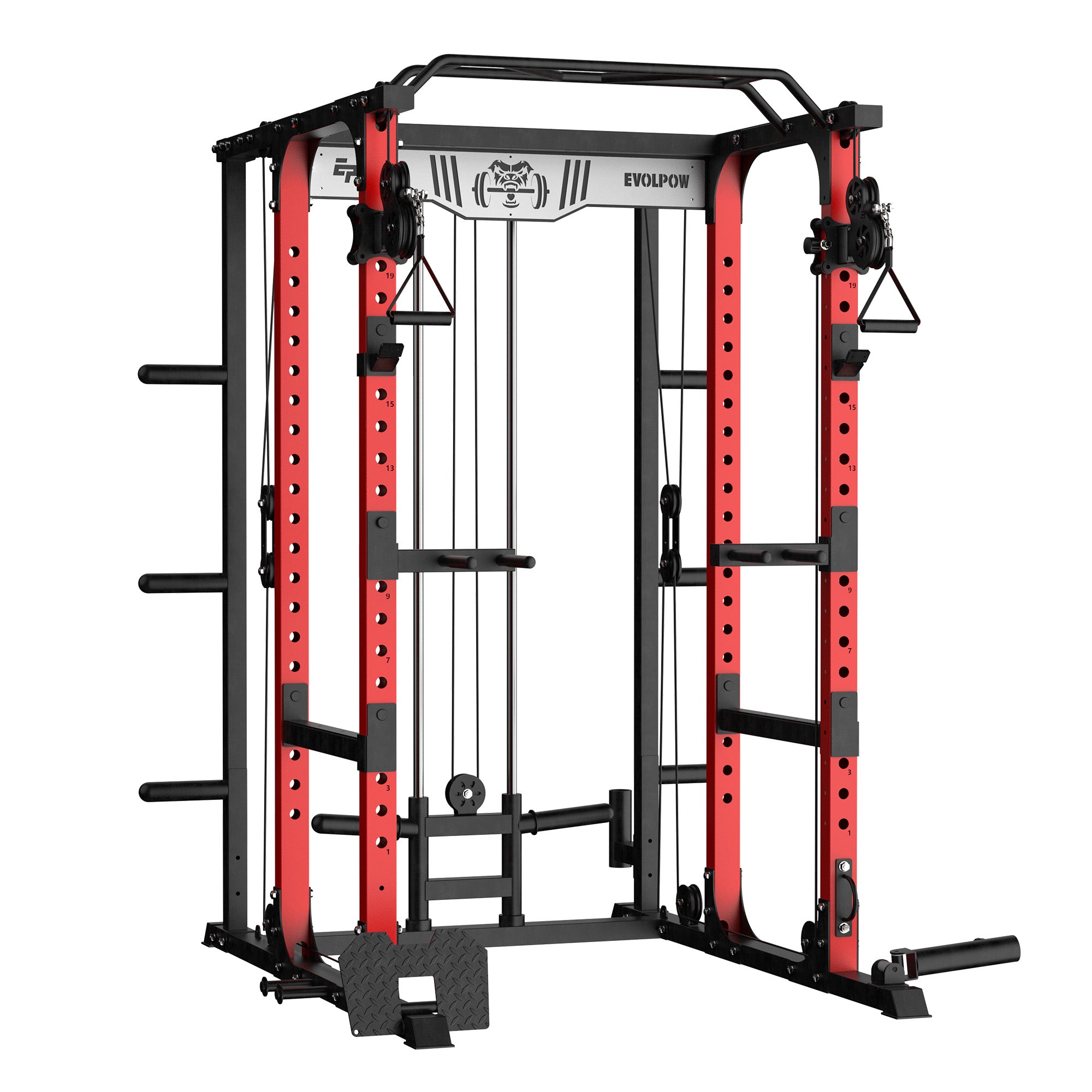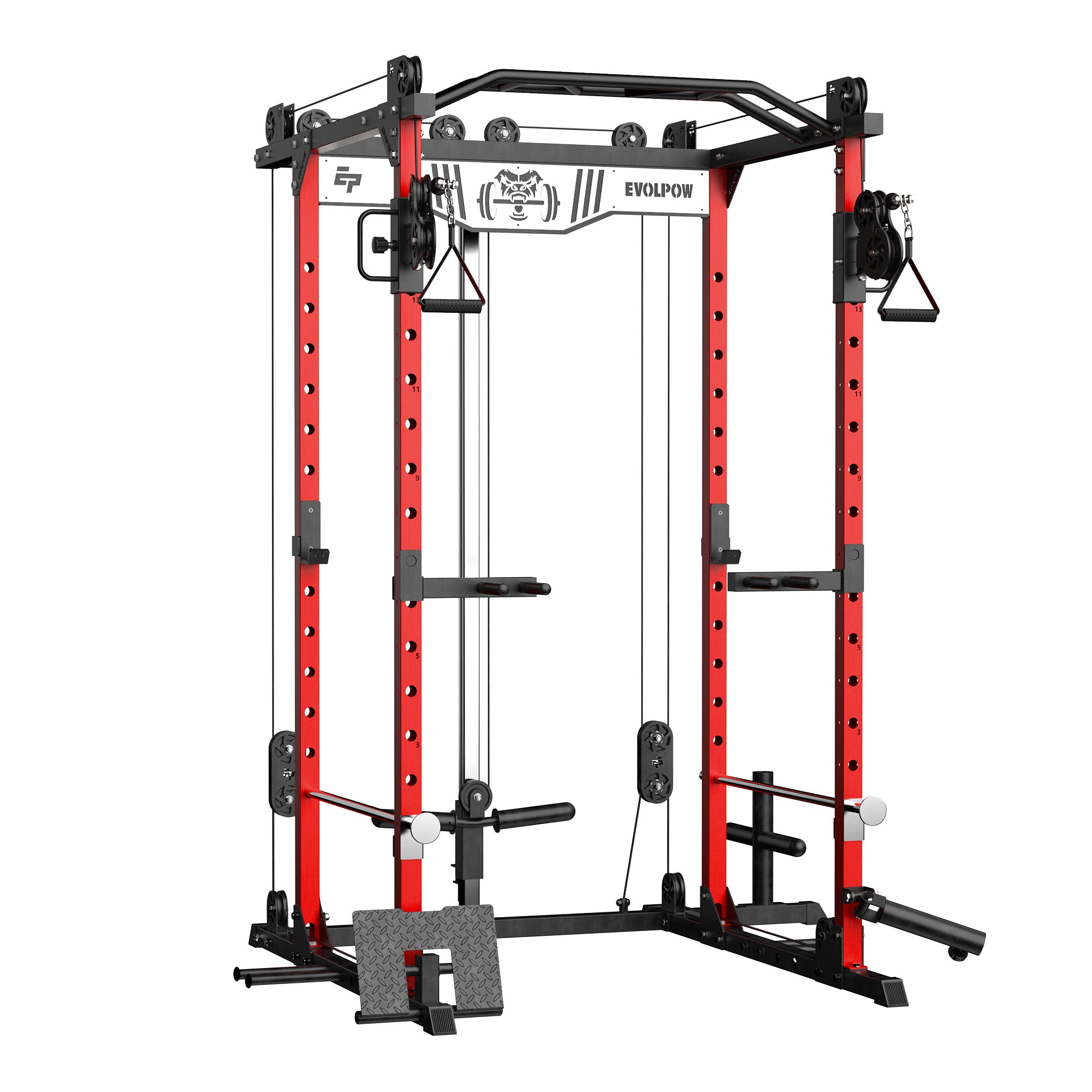On the way to pursuing a healthy life, barbell exercise is an important part of physical exercise. However, proper barbell posture is crucial, as an injury can overshadow the workout journey. This article will explore how to avoid injury during a barbell training, offering a range of practical tips and advice so you can safely and effectively push your physical limits. Whether you're a beginner or an experienced fitness enthusiast, whether you are barbell training at your home gym or sweating it out in a professional gym, these tips will help you stay fit and enjoy your workout. Let's explore how to challenge yourself in the barbell world without fear of injury.
Contents
- Common cause of injury
- Measures to prevent injury while exercising dumbbells
- Conclusion
-
Common cause of injury
Lack of Warm-up: Skipping warm-up before lifting increases injury risk. A proper warm-up boosts blood flow, flexibility, and joint mobility, preparing for the workout. Without it, muscles may be tight and prone to strains, tears, and injuries. Include specific dynamic movements to activate and prepare muscles for safe lifting.
Overloading: In barbell training, or attempting to lift weights beyond your current strength level, is a common cause of injury. It increases the risk of strains, sprains, and other acute injuries as muscles, tendons, and ligaments may not be adequately prepared. Progress gradually by increasing weight in manageable increments and maintaining proper form. Pushing too hard too soon can lead to overuse injuries and setbacks in your fitness journey.

Incorrect Movements: Incorrect movements during barbell exercises increase injury risk. Improper grip, stance, or posture can strain muscles and joints, leading to acute or chronic issues. For example, improper back posture during deadlifts strains the lower back, while incorrect wrist alignment during bench presses can cause wrist or elbow injuries. Learn and maintain proper form with guidance from a qualified trainer or instructional resources.
Fatigue: Fatigue compromises form and increases injury risk. It reduces muscle strength and endurance, making it challenging to maintain proper technique during barbell exercises, leading to strains, sprains, and other injuries. Prioritize rest, nutrition, and listen to your body to avoid pushing beyond your limits when fatigued.
Ignoring Pain: Ignoring pain during lifting is dangerous, leading to serious injury. Pain signals issues like muscle strain or joint inflammation. Continuing can worsen the problem, leading to severe injuries. Differentiate between normal fatigue and pain. Stop and seek guidance if experiencing sharp or persistent pain to prevent further injury.
-
Measures to prevent injury while exercising dumbbells
Learn Proper Technique: Proper form is crucial for preventing injuries with barbells. A certified trainer can teach you correct posture and movement patterns. Maintain a neutral spine, engage core muscles for stability, and control the barbell's motion range. For example, in a squat, keep knees from caving inward and back straight. Also, focus on grip strength and wrist alignment to avoid strain or discomfort.
Start Mild: Start with lighter weights to master correct form, allowing gradual adaptation of muscles, tendons, and ligaments to lifting stress. This reduces strain or injury risk. Include bodyweight exercises and resistance bands to build foundational strength before heavier weights. Choose a weight that lets you perform the exercise with proper form and the recommended number of repetitions.

Warm-Up: A thorough warm-up is crucial for preparing your body for weightlifting. Use dynamic movements to mimic your exercises, focusing on blood flow, flexibility, and mobility. This prevents injuries by improving tissue elasticity and neuromuscular function. Include leg swings, arm circles, and hip rotations. Add activation exercises like glute bridges or resistance band shoulder rotations.
Progress Gradually: Avoid increasing weight too quickly. Progress gradually and control the intensity, allowing your body to adapt. Increase weight or intensity over time with a structured program emphasizing progressive overload and minimizing overuse injuries. Use a training log to track progress and ensure consistent advancement. Increase weight by small increments (2.5-5 pounds for upper body, slightly larger for lower body) to maintain proper form.
Use Proper Equipment: Ensure barbell, weights, and equipment are in good condition and suitable for your strength level. Check for wear or damage before each workout and use collars and racks to secure weights safely. Proper equipment reduces accident and injury risks during training. Consider investing in supportive footwear and accessories like weightlifting belts or wrist wraps to enhance safety and performance. Prioritize comfort, fit, and functionality when selecting equipment to support your lifting goals and reduce injury risk. (Also, don't forget to check our official website for legit equipment!)

Rest and Recovery: Rest and recovery are crucial to prevent injury and enhance progress. Include rest days in your schedule and use strategies like stretching and foam rolling to reduce soreness and maintain flexibility. Rest and recovery optimize performance and prevent long-term injuries. Listen to your body, adjusting volume and intensity for optimal recovery. Avoid pushing through fatigue or pain, which can lead to overuse injuries and setbacks.
-
Conclusion
Injury prevention is paramount in maximizing the benefits of barbell training. By prioritizing proper technique, gradual progression, and attentive listening to your body, you can minimize the risk of injury and enjoy a safe and effective workout experience. Remember, consistency and patience are key in achieving long-term fitness goals without setbacks. Keep pushing your limits, but always prioritize safety first.
Q&A
Q: Are barbell exercises suitable for beginners?
A: Barbell workouts are a good option for beginners, but require special attention to proper form and technique. It is recommended that beginners first seek help from a professional instructor to learn proper posture and techniques to ensure safety and effectiveness.
Q: What should I feel after a barbell workout?
A: After exercising, you should feel some muscle fatigue, but you should not feel severe pain. If you feel intense pain or discomfort during exercise, you should stop immediately and rest. An effective workout should leave you feeling some soreness in your muscles, which shows that you've stimulated them, helping them grow and develop.
Q: How heavy should I pick the barbell?
A: The weight of the barbell should be determined based on individual circumstances and goals. Beginners should start with lighter weights and gradually increase to challenge the muscles and get used to the movement. In general, the weight should enable you to complete 8 to 12 repetitions per set while feeling challenged but maintaining proper posture and control.
Reference
The 8 Best Barbell Pads, According to an Expert (verywellfit.com)
https://www.wikihow.com/Do-a-Barbell-Bench-Press
https://www.fitneass.com/barbells-guide/
https://www.wikihow.com/Do-a-Barbell-Bench-Press
https://powerliftingtechnique.com/barbell-exercises/






